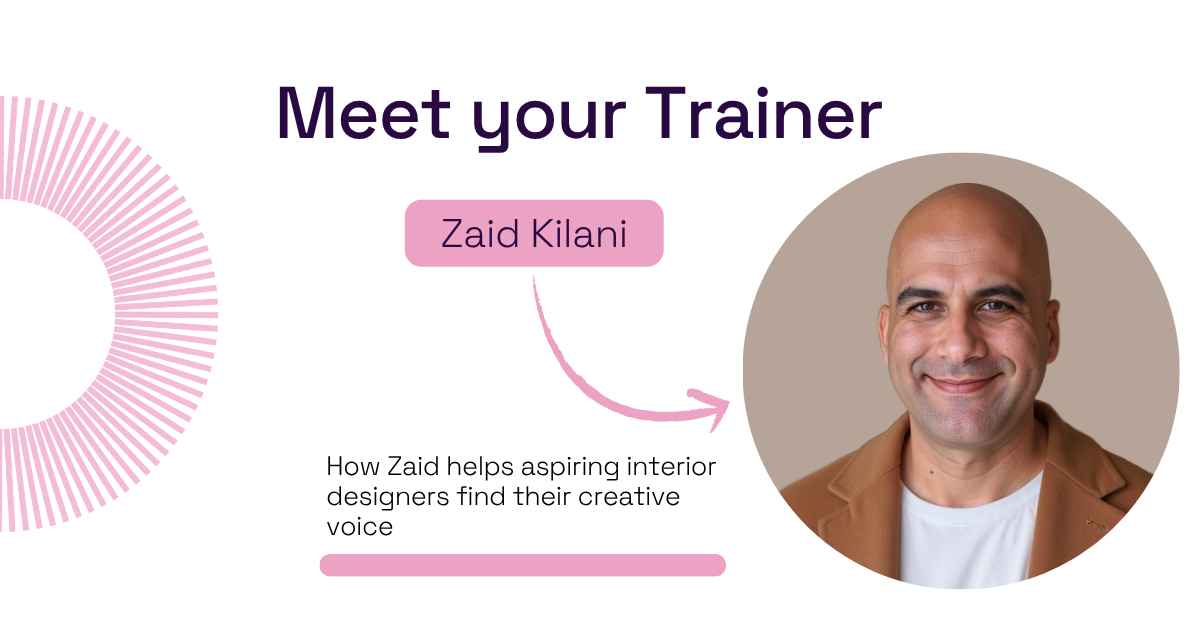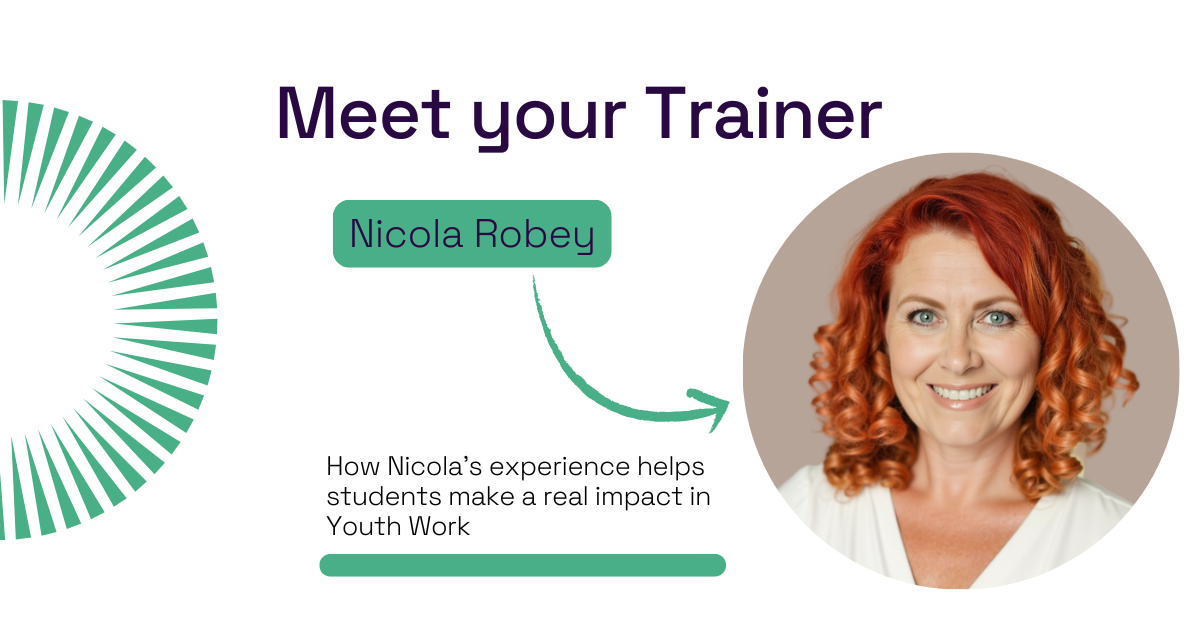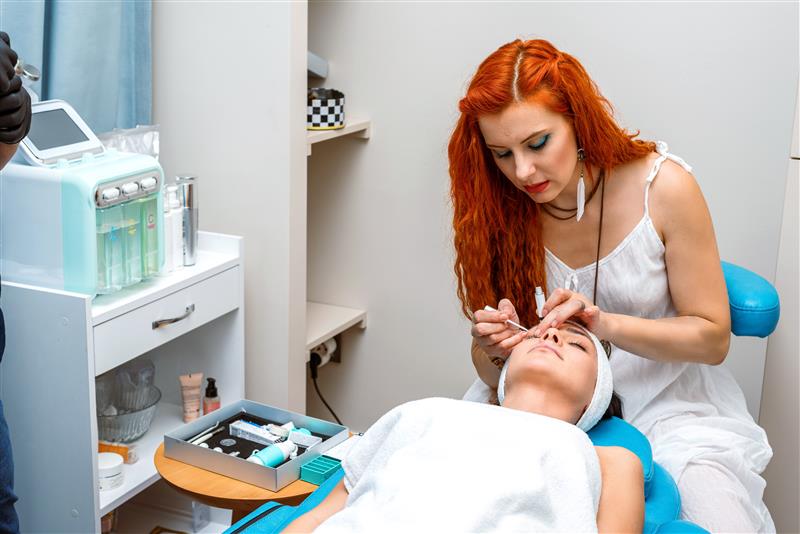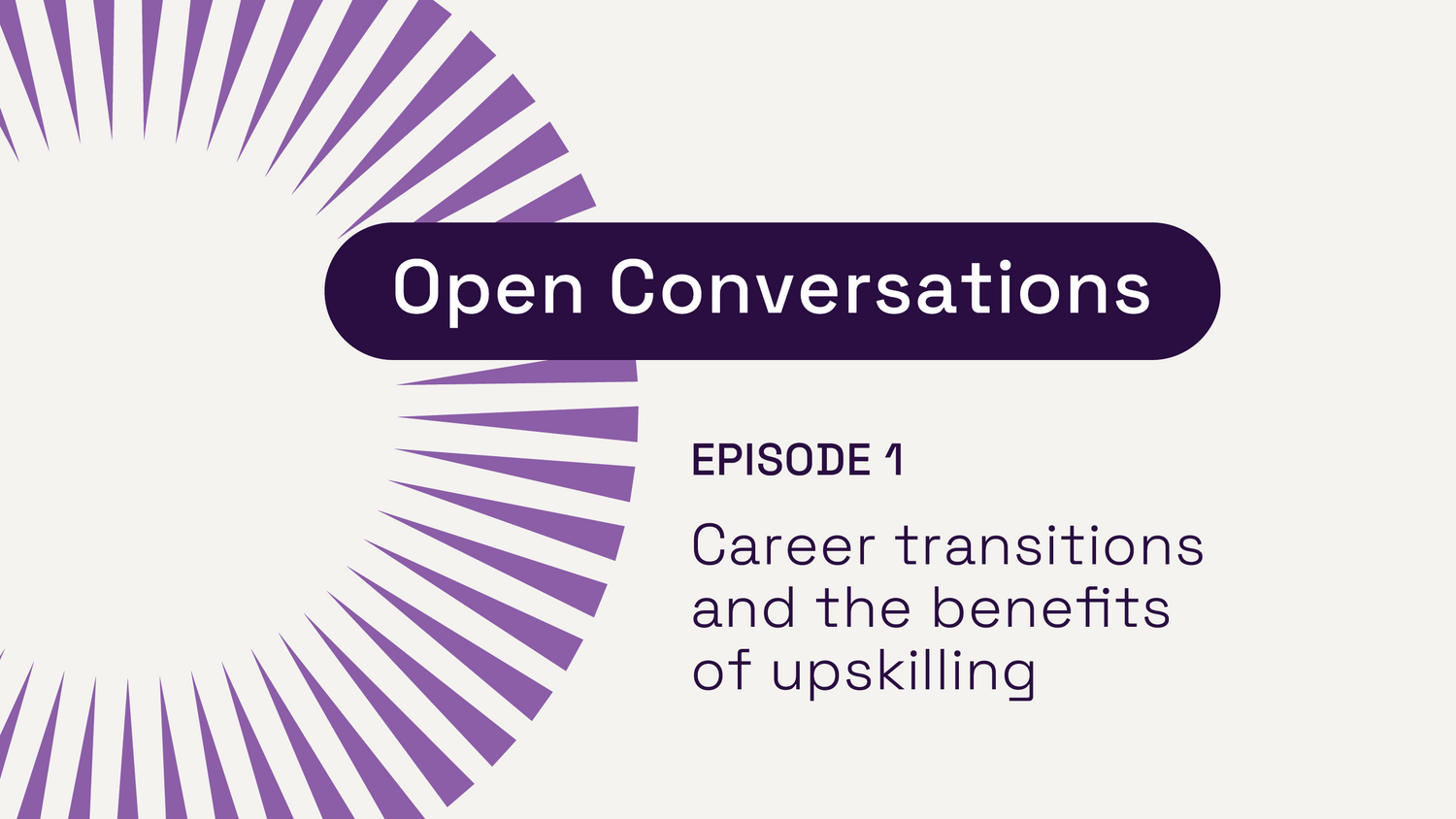During a recent class session, my students stared at me with blank expressions, glassy eyes, pasty and pale skin, and jowls drooping. I think I even saw a string of saliva hanging from the corner of one student’s mouth.
I was reviewing plot structure. It was perfect except for the fact that I was boring them to death. So I blurted out, “No wonder you like The Walking Dead, you look like zombies.”
Suddenly, the students sporadically kicked and jumped and held their stomachs while laughing. Maybe it was because I was no longer talking about plot structure, maybe it was because I mentioned their favorite show, or maybe it was because they liked it that I finally connected with them.
We spent the rest of the class learning plot structure while laughing about episodes of The Walking Dead.
Inside a classroom, the air thickens with time and words and problems and thoughts, lots of thoughts. Sometimes, there’s a need to break the boredom. The best break is laughter.
Humor in a virtual classroom enhances students’ interest and participation, according to a study conducted by Ohio State University professors of psychology, Mark Shatz and Frank LoSchiavo. Another study shows how it promotes brain activity. See HealthWatch: Stanford Study Shows How Humor Activates Child’s Brain.
There’s no better way to gain the upper hand than with a twist in words, a light-hearted joke, or an outright laugh.
Further your own education with a Certificate III in Education Support. Study online at your own pace. Click for more information & start today
The difficulty always lies in the delivery and the willingness of the teacher to seriously bomb. So, if you’re willing, try out some surprisingly simple and often unique ways to bring laughter into your lessons.
Only one rule really needs to be followed here. Never ever use humor at the expense of a student’s self-esteem. Joking with them is one thing. Putting them down is another. The classroom is not a comedy club. The use of comedy in the classroom is meant to engage students, draw their attention to your lesson, and offer inspiration.
1. It’s a Pain
First and foremost, all comedy arises from pain. Nothing really is as it seems so to laugh is the way we deal. If you aren’t comfortable with confronting your pain then none of this will work. On my first day teaching, I heard some students making fun of me. It stung a little. I hadn’t heard those comments since I was, well, in school.
So, I decided to deal with it. I brought it up in class without naming names. “It was interesting to hear a couple of girls make fun of my curly hair. I hadn’t had that happen since I was in school. You should’ve seen me growing up. I had an Afro, wore bell bottoms, and danced to the Jackson 5.” Some students giggled, a few burst into laughter, but mostly they felt comfortable with me. They also learned that there was no use in using their condescending tactics on me, which is a great lesson for kids who get bullied a lot.
2. Establish Rapport
Once you get to know your students, it will be easier to kid around with them. Finding out their sensitivities and difficulties helps you to twist them around into something positive and laughable. So, ask a lot of questions. Even come right out and ask what makes them laugh.
3. Lighten Up
First and foremost, education is serious business. When I see that a sixth grade student can’t even read at a third-grade level or barely knows multiplication, I’m startled, saddened, and outraged. But, I realize that no one’s learning anything without enjoying the process. That’s precisely when I start joking around. I work at the lesson until I can get students to succeed then I start teasing them and joke around with them. It’s always positive. I ask, “What were you whining about? You kids are crazy. That was outrageous. When I’m wearing bifocals and walking with a cane you better visit and read to me.”
4. Be You
Too often, teachers are the joke to students, so the sooner you make fun of yourself, the better. Of course, you have to be strict and enforce your rules, but slip some self-deprecating remarks in there right from the start and students will know you’re for real.
5. Be Honest
The best comedy stems from blatant honesty. Telling students that you once walked from the bathroom through half of a school day with toilet paper hanging from the back of your pants doesn’t just garner laughter at a humiliating moment, but it makes them feel not so bad about their daily disappointments.
6. Be Weird
There’s absolutely nothing more refreshing than a strange teacher. Wear your bell bottoms or your bow tie. The hair that flies everywhere or the bright yellow shirt makes students giggle and feel like they’ve met a real character.
7. Use Voices
Changing the pitch of your voice wakes students up from their daily trance, and it might just make them laugh too. You really don’t even have to be good at it. In fact, the worse you are, the better. They’ll start giggling immediately and all you have to do is explain that it’s your teacher voice. That’s the way teachers sound right?
8. Use Improv
Improv involves creating games in the classroom and letting the students take it from there. A lot of the ideas in this article thrive on improvisation, but a great resource for improvisational games is The Second City Guide to Improv in the Classroom www.amazon.com
9. Wear T-shirts
You know the T-shirt you love to wear but think it’s better to dress like office personnel instead? Go ahead, wear the Darth Vader shirt that reads, “Stay Calm and May the Force Be with You,” or the shirt with Strawberry Shortcake on it. I never saw the students more interested than when I wore a black T-shirt with “Ssshhhh Be quiet” on the front.
10. Use Dave Barry
Columnist Dave Barry’s sometimes dry, many times quirky and shocking humor makes for great laughs and stimulating classroom reads. He hits on almost every subject. Just make sure it’s appropriate for the age group, which is usually sixth grade and up. Check out his story on DJs and Democrats. www.miamiherald.com
11. Comic Strips
Political Cartoons and most comic strips for that matter make great classroom posts and good lesson starters. So post it, share it, and if the students don’t understand the humor, explain it. www.gocomics.com
12. Tongue Twisters
At think.com find tons of tongue twisters such as “A big black bug bit a big black bear, made the big black bear bleed blood.”
13. Slapstick
Not of the Three Stooges brand but emphatically physical, slapstick delivered by the teacher draws fits of laughter. If you’re the kind of teacher that can move through the class and climb on tables, this provides students with entertainment and laughter. When I went to an awards ceremony for Excellence in Teaching, bestselling author and teacher Ron Clark spoke and told inspirational stories as he jumped onto tables. All I could think was that he was crazy, and I could never do that. But, some teachers can and should. www.ronclarkacademy.com
14. Cup of Tea
During one class, the students and I were trying to figure out how to set ourselves up for reading with a British accent. So we decided to say, “Cup of tea,” with our pinky raised as if we were preparing to take a sip of tea. It worked and it gathered laughter for the first twenty minutes of class. If you’re reading about the English, use an English accent. If you’re reading about the Southerners in the United States such as Alabama, use a Southern accent.
15. Be Gross
Tell them about the time a bird pooped on your head when you were talking to that person whom you adored. Or, ask why students pick their noses right in front of you, even when you look at them, your eyes widening, hoping for an end to the madness.
16. Be Messy
We are all a mess sometimes. When your papers go flying or you trip, don’t profess defeat too soon. Maybe you’re used to being orderly, but that can’t always happen. So when you’re messy, enjoy it. Show them you not only have grace but can laugh at yourself too.
17. Be a Sad Clown
When you don’t feel well or feel sad, masking it with more rigid schoolwork may not help anyone. If you don’t have the energy to present an all out lesson, then clown around a little while you do more routine work. Say, “Sorry we’re doing this, but I realized when I almost left the house with my shirt on inside out that you weren’t going to learn anything if I tried to work on something else with you.”
18. Misery Loves Company
When you’re all miserable because it’s Friday and you know you have to come in on Saturday for tutoring or you’re in your final three weeks of standardized testing, be miserable together. Flash your basic anger at the system and watch the smiles appear. Sometimes I simply ask, “What are we all doing here?” That gets the juices flowing and twists into hilarious stories from everyone.
19. Heal Wounds
I found a student in tears and when I sat to talk to her I found out exactly why. Some students go through horrors that no one should ever have to endure. Yet, here they are. By the end of our two-hour chat, I told her how excited I was to be her teacher and that she’d better be there when I start crying later in the year. We were laughing so hard and blowing our noses at the same time.
20. Make & Break Rules
Let’s face it, rules make no sense sometimes, and sometimes they’re downright ridiculous. I had this rule that students weren’t allowed to chew gum in order to make myself seem strict.
However, it backfired. Students started treating it like an addictive drug habit. They snuck around handing out gum, and they started chewing it in my class to see if I could catch them. I thought it was hilarious. One class period I announced, “Whoever’s chewing gum, spit it out right now.” Twenty-seven kids stood up and spit their gum out one by one into the garbage.
21. Music
A math teacher recently said the line goes in one direction and the class started giggling and singing a One Direction song. When students dance in their seats, giggle, and sing, let them because it’s a way of pulling them into the lesson.
A few years ago when Miley Cyrus was still popular and I was teaching students about learning from mistakes. I said, “Everybody makes mistakes.” That was it. The whole class bounced in their seats, sang in unison, and laughed. I obviously didn’t plan that, but it was a great moment in a lesson otherwise lost to glances out the window.
22. Charades
This was actually something I learned when I lost my voice. I had to do a lot of writing on the board, but for some things I simple mimed the meaning and students guessed. When I’m tired I use this too. For instance, I wave my hand forward to begin the pledge. They look at eachother then I point and they begin. I motion for them to check IDs. They giggle and check. It’s interesting how sometimes teachers don’t need to say anything to get the most attention.
23. Reality T.V.
Kids love to talk about talk shows, reality shows, and the latest popular drama. So let them, and then work some humor in by asking why they need to watch Jersey Shore or is it necessary to watch every episode of American Idol? If you act as if you were so surprised that they got you off topic then move them back to the lesson, they feel like they manipulated you so that they’re the one’s in charge. To them, that is success.
24. Impressions
Some of the worst impressions are some of the funniest. I often have my own terrible impressions of super models. Sometimes students like to shoot you down and do their own impressions. Good, as long as you’re in control and everyone’s laughing.
25. Give False Consequences
If students are acting up and jumping out of their seats, which usually happens with the after-lunch crowd, then give false consequences such as lunch detention or detention in general. In about five to ten minutes, take it back because they were so good after all. It often turns into a game of them quieting down for five minutes at a time, complete with giggles, but keeps them under control.
26. Try Five Guys

Five Guys is something I came up with after a kid decided to make fun of me for yelling, “Guys!” every time the class was too loud. After getting over it, I realized it’s a great way to control the class. If they get Five Guys (the restaurant chain that President Obama loves–laughter), they get lunch detention. No one ever gets to the fifth one and everyone enjoys the game.
27. State the Obvious
“I’m standing here waiting for you to listen.” Hushed laughter fills the room. “Do I look angry enough for you?” Giggles pepper the room.
28. Faux Pas
There are those awkward moments when either a teacher or a student breaks a social norm or doesn’t use proper etiquette. In the middle of a lesson, a student got up and started talking to me about her cat. I really don’t know why. Everyone’s eyes were shifting back and forth including mine. Snickers followed.
The awkwardness of it made for an even more interesting lesson. Students kept raising their hands and saying something about their cat or dog. The student then became the cat kid and liked it. I’m always careful to gauge the students’ feelings when joking around. If they don’t like it, it’s just not funny.
29. Dude
I sat in a class where an older teacher said, “Dude, what are you doing?” The laughter flew through the room. Teachers using vernacular particular to the students sounds ridiculous but amusing to them.
30. Use Situational Comedy
In situational comedy, you’re presented with a group of characters who embody completely different personas, which is exactly what makes them so funny. They clash and crumble while one character (you, the teacher) or one situation (the classroom) puts them back together.
31. Use Irony
“I hate school,” I announced quite matter-of-factly one day. Almost in unison, my students shouted, “But, you’re a teacher!” I said, “Exactly.” This started a spirited comic fest that lasted the whole of the year. They were very interested to know how a teacher could justify this. I sprinkled in answers to their questions throughout lessons to keep them interested in what I really wanted them to learn.
32. Use Sarcasm
Use it and use it often. Sometimes students are perplexed by it. Other times they mimic it. The bottom line is that sarcasm is a survival mechanism for most teachers. “I can see you’re enjoying the unique flavor of the eraser on that pencil but lunch will be here soon.” A student who doesn’t know that he’s lost on the eraser instead of the lecture will return quite nicely to paying attention and most of the time you get his attention for good because he’s startled that you noticed at all.
33. Use Theatrics
There’s nothing better than good theatrics. The dramatic way you love your subject truly entertains students. Be passionate and they may laugh at you, but remember, that’s what you want. In the novel Wednesday Wars, the Language Arts teacher’s obsessed with Shakespeare. Her obsession makes for great comical moments.
34. Dark Comedy
This is humor at the expense of a ridiculous character tormented with bitter irony. Guess who’s the ridiculous character? You, the teacher, and, well, bitter irony shouldn’t be too difficult to discover. Sometimes share, sometimes don’t.
35. Use Antics
Teachers can be childish. So at those moments revel in the idea that you might just be adding some interest to your persona. All the things we shake our heads at in children are the same things we adore doing ourselves: screaming as we run, throwing fits when things don’t go our way, making a mess and not cleaning it up. Use these antics wisely. Throw a fit when they don’t do well on an exam. Stomp your feet then throw a stack of papers on the floor. Attention and grins will follow.
36. Challenge Flaws
I always struggled with spelling. That’s why I’m so good at editing. That’s also why kids have so much fun editing my sentences on the board. I make mistakes and welcome their criticisms.
37. Use Fear
Some of the funniest moments arise out of fear or anxiety. When you or the students encounter it, remember your humor when appropriate. Bringing up your irrational fears is a great equalizer. If you’re afraid of the ocean and you mention it when reading or teaching about aquatic life, students will giggle but also covertly relate to it.
38. Use Hope
There is a hope that there will someday be a world with no school, no lessons, no homework and a hope for some students that they might grow up to be a Professor of Video Games and Technology, which may actually be a reality someday. But, they still have to graduate high school to get there. To get what they want, they need you. So ask that inevitably difficult question: What do you want to be when you “grow up”? The answers alone supply giggles galore, then let the rest take you to the points you want to make.
39. Use the Extremes
No two kids are alike and some are so different you wonder how they ended up in the same realm let alone the same classroom. Take the two extremes and put them side-by-side. One will dominate and the other will clash and vice versa. It makes for great humor as long as you keep it under control.
40. Switch Perspectives
Sit in the back of the class, in a student’s chair, and be the student. We’ve all had students present before, but try having them control the classroom and you become the spectator. Students love it and love to mimic the teacher even more.
41. Worst Moments
Teaching kids to laugh at themselves gives them a sense of power over those moments when they lose all power. Have them make a list of their worst moments and write about why it’s funny now. If there’s no time to make a list and write about it then talk about it throughout a lesson.
42. Sponge Bob
When I first started teaching, a student told me his favorite teacher was one of the science teachers. When I asked why, he said it’s because he talks about SpongeBob. My eyes rolled to the sky, not out of frustration, but because I was thinking of ways to work him into my classroom lessons. If you actually watch about five episodes, you’ll find something. The language, the drama, the conflicts, and the science of it all makes SpongeBob a great teaching tool.
43. Superhero
Ask students who their favorite superhero is right in the middle of a lesson. Watch the eyes sparkle and adrenaline rush. Students pop up in their seats for this one. The laughs begin the minute they blurt out their favorite one and describe why. Then tie it into what they’re learning.
44. Vampires
The girls swoon over vampires and the boys hate them, at least that’s what they pretend to feel. The fact that it’s a topic everyone’s obsessed with makes it too useful not to try out. I usually start by saying, “Vampires? Have you not had your share of blood. Do you need to drain me of all my life energy?” Then, they jump in with stories and giggles.
45. Favorite Comedies
Ask students what their favorite sitcoms are then use it to teach. Have them act out a scene from the sitcom that fits the concepts and problems into one of their favorite episodes.
46. Dinosaurs
Much of the time the students believe teachers to be dinosaurs trapped on their island even if you’re fairly young. So, use it to teach and laugh sometimes.
47. Seriously?
We all experience the Seriously? Moments. Classrooms are perfect breeding grounds for them: The student whose pencil drops one too many times and the girl who flips her hair between seconds. Everyone notices it. Just add a Seriously? And the class trickles with laughter.
48. Little Liars
Students lie, a lot. Sometimes I catch them. Sometimes I don’t. However, I tend to be hyper aware of it, so I often ask, “Are you lying?” which can cause a riot of talk that often ends in bursts of laughter either through criticizing me or through attempts at proving innocence.
49. Bathroom Breaks
The lies we tell make for great segues into and out of topics.
The “I need to go to the bathroom” emergency excuse that gets told every class period gives you an excuse to laugh. I sometimes ask if they’ll do the bathroom dance to make it more believable. The extroverts do it. The introverts smile and say please.
50. Lights Out
A great way to control an older group of students is to treat them like they’re in Kindergarten. When they’re yelling and talking and the “look” doesn’t get them then turn the lights out, begin counting, and command that they put their heads down. The giggles and squeals of laughter make it fun and you regain control of your class.










